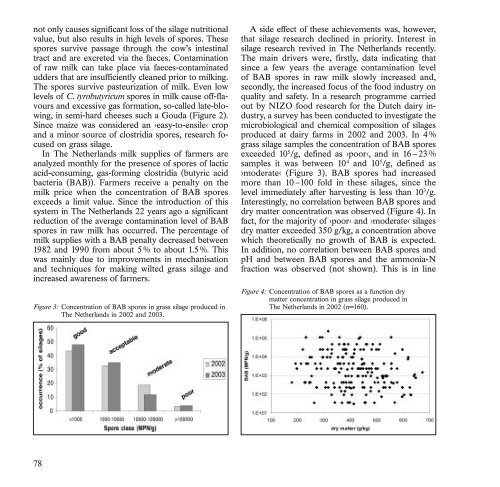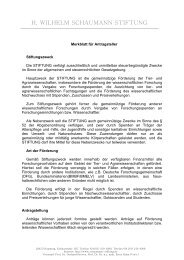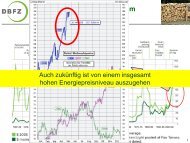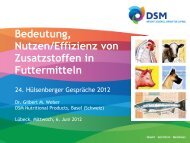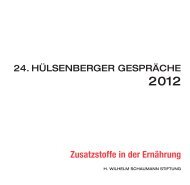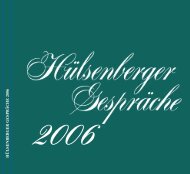Broschüre 2004 zum Download (pdf | 1994,28 KB) - H. Wilhelm ...
Broschüre 2004 zum Download (pdf | 1994,28 KB) - H. Wilhelm ...
Broschüre 2004 zum Download (pdf | 1994,28 KB) - H. Wilhelm ...
Sie wollen auch ein ePaper? Erhöhen Sie die Reichweite Ihrer Titel.
YUMPU macht aus Druck-PDFs automatisch weboptimierte ePaper, die Google liebt.
not only causes significant loss of the silage nutritional<br />
value, but also results in high levels of spores. These<br />
spores survive passage through the cow’s intestinal<br />
tract and are excreted via the faeces. Contamination<br />
of raw milk can take place via faeces-contaminated<br />
udders that are insufficiently cleaned prior to milking.<br />
The spores survive pasteurization of milk. Even low<br />
levels of C. tyrobutyricum spores in milk cause off-flavours<br />
and excessive gas formation, so-called late-blowing,<br />
in semi-hard cheeses such a Gouda (Figure 2).<br />
Since maize was considered an ›easy-to-ensile‹ crop<br />
and a minor source of clostridia spores, research focused<br />
on grass silage.<br />
In The Netherlands milk supplies of farmers are<br />
analyzed monthly for the presence of spores of lactic<br />
acid-consuming, gas-forming clostridia (butyric acid<br />
bacteria (BAB)). Farmers receive a penalty on the<br />
milk price when the concentration of BAB spores<br />
exceeds a limit value. Since the introduction of this<br />
system in The Netherlands 22 years ago a significant<br />
reduction of the average contamination level of BAB<br />
spores in raw milk has occurred. The percentage of<br />
milk supplies with a BAB penalty decreased between<br />
1982 and 1990 from about 5 % to about 1.5 %. This<br />
was mainly due to improvements in mechanisation<br />
and techniques for making wilted grass silage and<br />
increased awareness of farmers.<br />
Figure 3: Concentration of BAB spores in grass silage produced in<br />
The Netherlands in 2002 and 2003.<br />
A side effect of these achievements was, however,<br />
that silage research declined in priority. Interest in<br />
silage research revived in The Netherlands recently.<br />
The main drivers were, firstly, data indicating that<br />
since a few years the average contamination level<br />
of BAB spores in raw milk slowly increased and,<br />
secondly, the increased focus of the food industry on<br />
quality and safety. In a research programme carried<br />
out by NIZO food research for the Dutch dairy industry,<br />
a survey has been conducted to investigate the<br />
microbiological and chemical composition of silages<br />
produced at dairy farms in 2002 and 2003. In 4 %<br />
grass silage samples the concentration of BAB spores<br />
exceeded 10 5 /g, defined as ›poor‹, and in 16 – 23 %<br />
samples it was between 10 4 and 10 5 /g, defined as<br />
›moderate‹ (Figure 3). BAB spores had increased<br />
more than 10 –100 fold in these silages, since the<br />
level immediately after harvesting is less than 10 3 /g.<br />
Interestingly, no correlation between BAB spores and<br />
dry matter concentration was observed (Figure 4). In<br />
fact, for the majority of ›poor‹ and ›moderate‹ silages<br />
dry matter exceeded 350 g/kg, a concentration above<br />
which theoretically no growth of BAB is expected.<br />
In addition, no correlation between BAB spores and<br />
pH and between BAB spores and the ammonia-N<br />
fraction was observed (not shown). This is in line<br />
Figure 4: Concentration of BAB spores as a function dry<br />
matter concentration in grass silage produced in<br />
The Netherlands in 2002 (n=160).<br />
78


